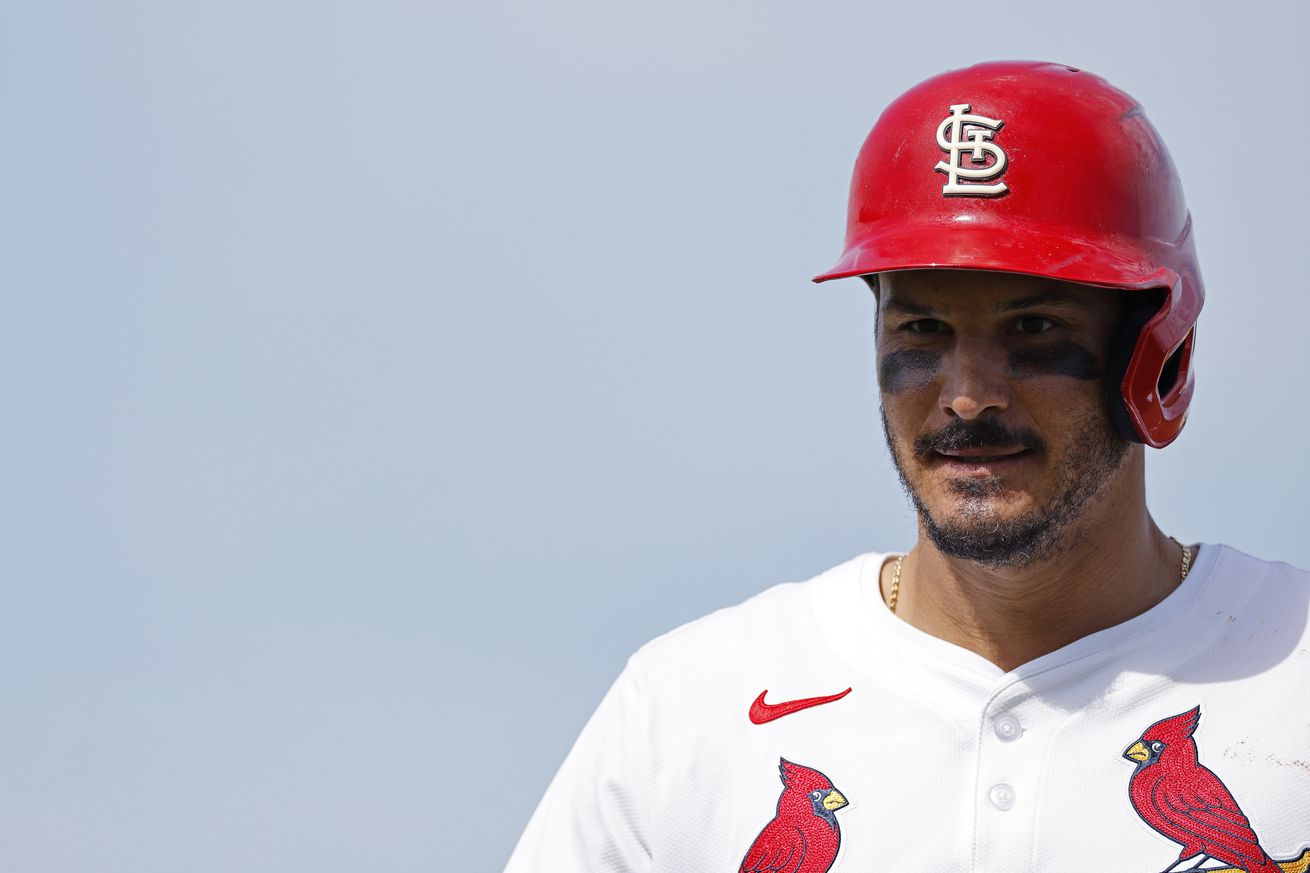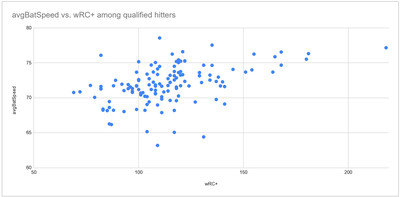
The trick is swinging the bat faster (MAYBE!)
I so badly wanted to pull some updated data on Nolan Arenado’s bat speed. I wanted this information so very badly that I navigated to GitHub, downloaded about 10 different Python scripts, tried compiling Nolan Arenado Statcast data, ran into 100 errors, and spent hours trying to get it to work, and then finally gave up realizing that the Statcast data appear to only go through 2024 and part of 2023 anyway. I will provide the links to what I was working with if anyone smarter than me wants to try this for themselves. If you figure it out and write a Fanpost I might be inclined to post it to the front page.
The reason I wanted it so badly is because I think there might be evidence that Nolan Arenado’s bat speed is increasing and that could be a very good thing. At least it seems like it might be. Let’s take a quick look at baseball’s top hitters in correlation to their bat speed rank:

Baseball Savant; Fangraphs
Well now this is sort of unexpected. I think conventional wisdom would suggest a stronger correlation here, but what it looks like to me is a majority of hitters live within a certain range, suggesting to me that once someone reaches the level of professional baseball player, their bat speed is likely already pretty elite and any discrepancies among Big Leagers are pretty slim. It is noteworthy that the really expectational hitters, with a wRC+ of 150 or greater, all have a bat speed of 73 miles per hour or greater, though. A player can be quick with the bat and still hit poorly, but the reverse is not true, at least in this sample.
How does this relate to Arenado then? There has at times been some discussion on his bat speed. Bernie Miklasz mentioned it in his article on Scoops from last month stating:
A faster bat speed would benefit him. And that’s what he worked on all winter, and in a variety of ways. I went back today and checked this Statcast information and expanded on it some. In 2024, Arenado’s three fastest bat-speed readings occurred in July, August, May and June. In 333 at-bats during those four quickest-bat months, he batted .291 and slugged .459 with 14 doubles and 13 homers.
I also found this Reddit post discussing Arenado’s bat speed being in decline. I found the observation really interesting, especially considering Arenado’s down year in 2024. In 2023, Arenado hit for 106 wRC+ in 612 plate appearances (though the Statcast data is only from the second half of the season, which was even worse than his overall numbers with a 78 wRC+ in 248 plate appearances) with an average bat speed of 71.4 mph. In 2024 his average bat speed came in even slower at 70.7 mph and his wRC+ was 102 in 635 plate appearances. Unfortunately, that is as far as the Statcast data goes, so the only way to find out just what sort of impact his bat speed might have on his hitting results is to wait and see as the data comes in. There have been some early indicators that Arenado’s offseaon work is paying off, but it is really early. As in only five swings early.
Tweaked my bat speed adjustments code to include controls for pitch location, then recreated Will’s table for biggest changes in adjusted bat speed:
github.com/sbrown70/bat…— Stephen Sutton-Brown (@srbrown70.bsky.social) 2025-03-04T18:08:55.658Z
Which brings me back to what I was trying to do earlier — use Stephen’s code to pull more data. Even if I had been successful, there are likely still not enough data points where I would be comfortable drawing any conclusions, but it is something I would like to look for as Spring Training progresses and the season begins. Some other data I was looking at showed Jordan Walker had a bat speed increase, which might be a good thing for him as well. Or it could mean nothing! I guess I just have to be patient and wait.
Happy Sunday!